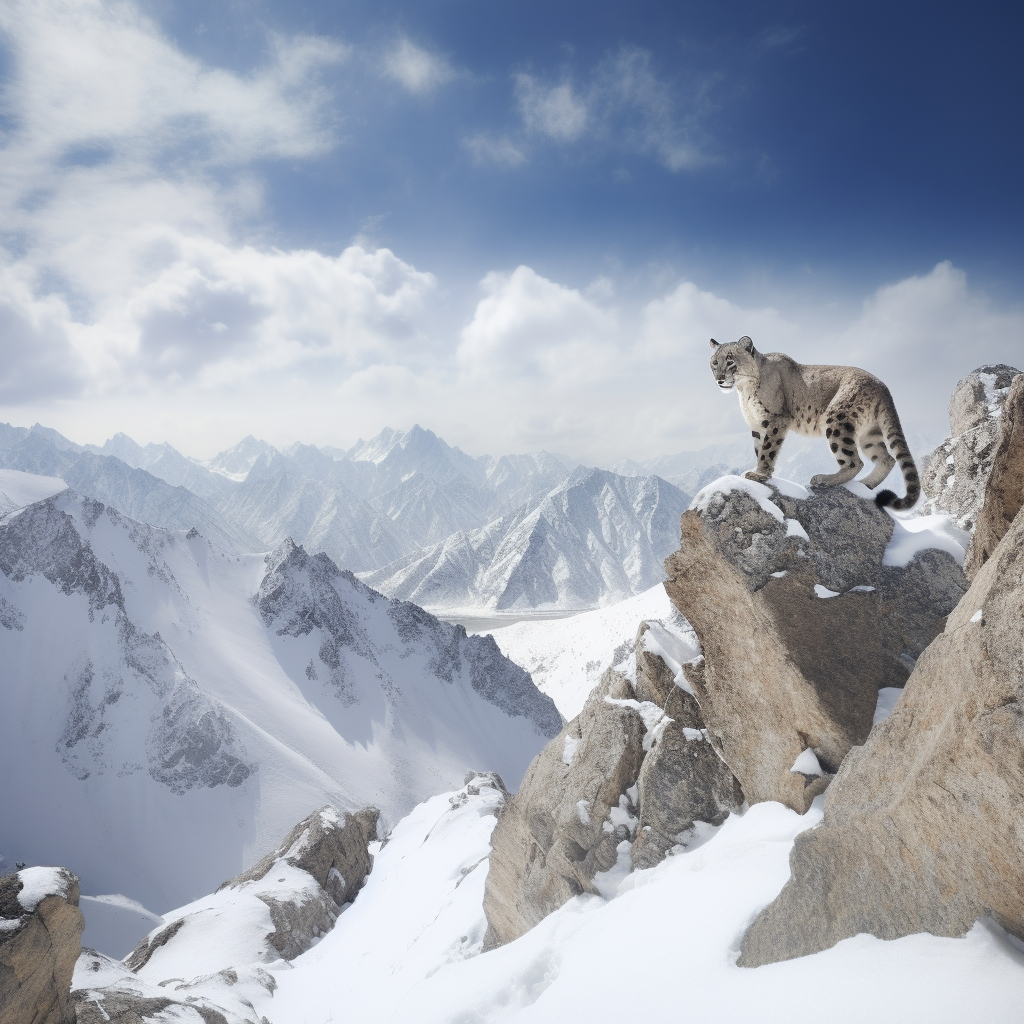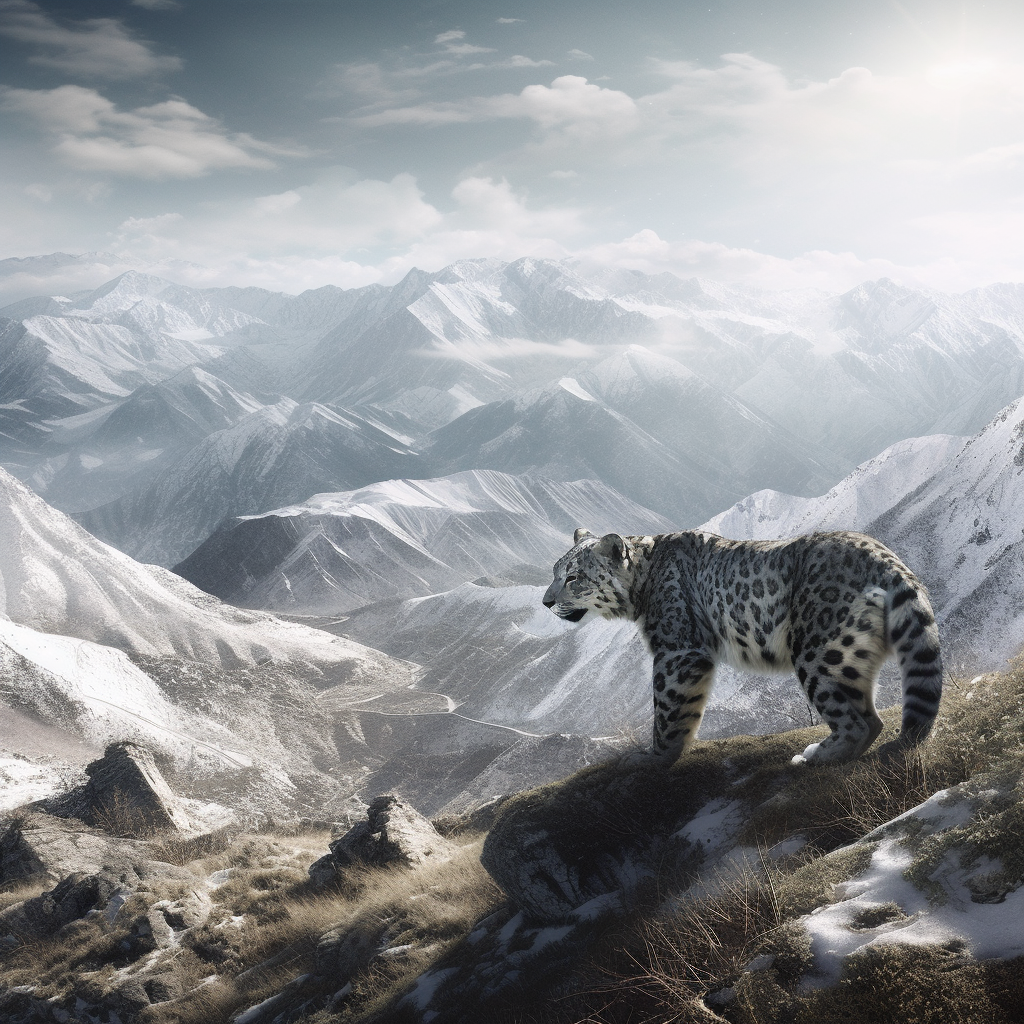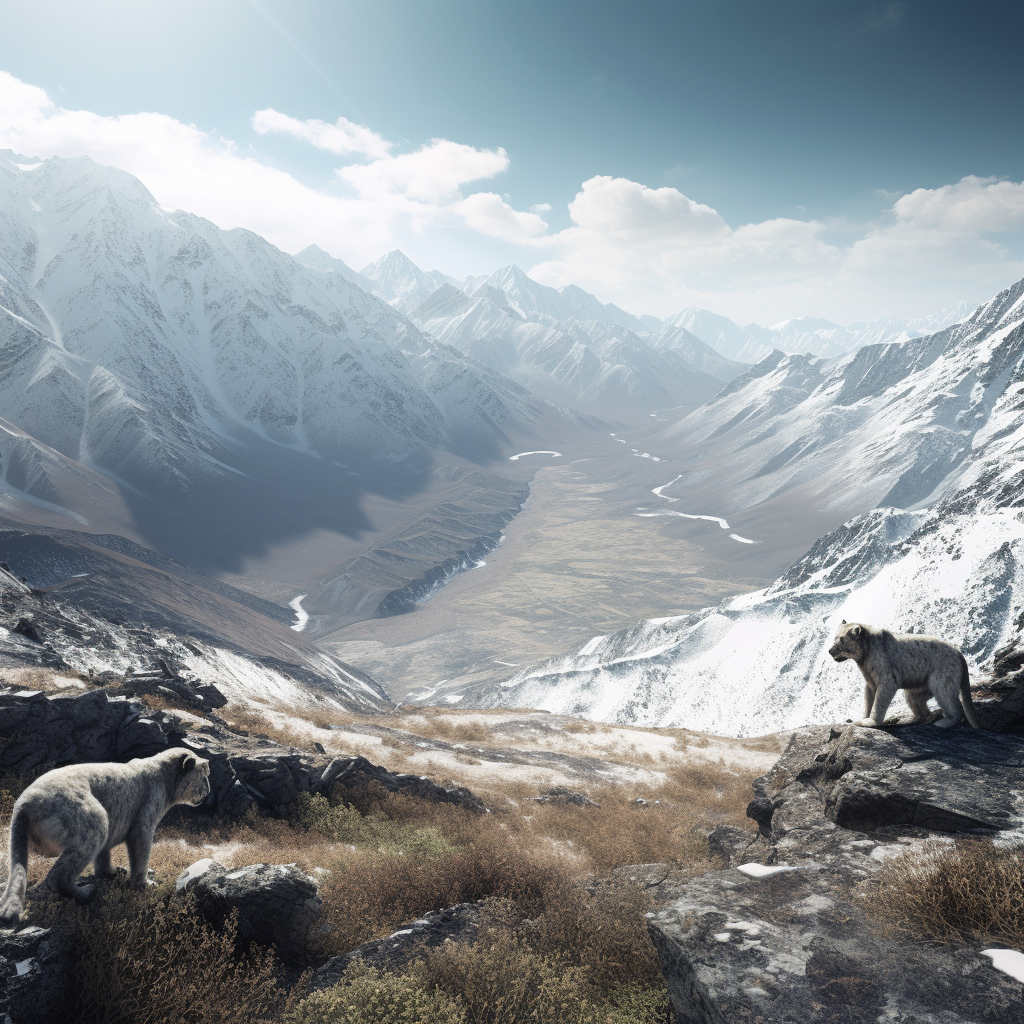Snow leopards, scientifically known as Panthera uncia, are majestic creatures that inhabit the rugged and remote mountain ranges of Central and South Asia. These elusive big cats are perfectly adapted to survive in the harsh and unforgiving environments of the high altitudes, where they roam across twelve countries. From the snow-covered peaks of the Himalayas to the rocky terrain of the Tibetan Plateau, snow leopards have carved out their niche in some of the most inhospitable regions on Earth. Their unique habitat preferences and remarkable adaptations make them one of the most fascinating and endangered species in the world. In this article, we will delve into the details of where snow leopards live, exploring their range, habitat, and the challenges they face in their quest for survival. So, let’s embark on a journey to discover the hidden world of these magnificent creatures and gain a deeper understanding of their lives in the wild.
Key Takeaways
- Snow leopards are found in the mountainous regions of Central and South Asia.
- Their habitat includes countries like Afghanistan, Bhutan, China, India, Kazakhstan, Kyrgyzstan, Mongolia, Nepal, Pakistan, Russia, Tajikistan, and Uzbekistan.
- They prefer steep and rugged terrains with rocky outcrops and cliffs.
- Snow leopards are adapted to living in cold, high-altitude environments, often found at elevations between 3,000 and 5,500 meters (9,800 and 18,000 feet).
- Conservation efforts are crucial to protect the snow leopard population and their fragile habitats.
The Natural Habitat of Snow Leopards

Snow leopards, also known as “ghosts of the mountains,” are majestic creatures that inhabit some of the most extreme and inhospitable environments on Earth. Let’s delve into the natural habitat of these elusive big cats and understand why they thrive in such challenging conditions.
A. The Mountainous Abode: Why Snow Leopards Prefer High Altitudes
Snow leopards are well-adapted to life in the mountains, particularly in the Central Asian region, including the Himalayan Mountains. These magnificent creatures can be found in alpine and subalpine zones, where they roam the rugged terrain of rocky slopes and steep cliffs.
Living at high altitudes provides several advantages for snow leopards. Firstly, the rocky landscape offers them ample opportunities to camouflage and blend seamlessly with their surroundings. Their thick, long fur, speckled with rosette-like spots, helps them remain hidden from potential threats and prey.
Secondly, the mountainous habitat allows snow leopards to have a vantage point from which they can spot their prey. Their long limbs and muscular body enable them to traverse the treacherous terrain with ease, making them skilled climbers and agile hunters.
B. The Cold Climate: How Snow Leopards Adapt to Chilly Temperatures
Snow leopards have evolved remarkable adaptations to survive in the frigid temperatures of their habitat. Their thick fur acts as a natural insulator, keeping them warm even in sub-zero temperatures. This dense coat also helps reduce heat loss, allowing them to conserve energy in their harsh environment.
Additionally, snow leopards possess a unique adaptation in their nasal cavity. They have a large nasal chamber that warms the cold air they breathe in before it reaches their lungs, preventing the loss of precious body heat.
These adaptations enable snow leopards to thrive in cold desert regions, where temperatures can plummet to extreme lows. Their ability to withstand such harsh conditions is a testament to their resilience and adaptability.
C. The Biomes and Ecosystems: Understanding the Snow Leopard’s Environment
Snow leopards inhabit a variety of biomes and ecosystems within their range. They are found in diverse habitats, including the rugged mountain ranges of Central Asia, the Tibetan Plateau, Mongolia, China, India, and Pakistan.
These regions are characterized by high biodiversity and are home to a plethora of wildlife species. Snow leopards play a crucial role in maintaining the delicate balance of these ecosystems by regulating prey populations, such as blue sheep (bharal), ibex, and argali.
However, the snow leopard’s natural environment is under threat due to human activities. Habitat loss, poaching, and retaliatory killings by local communities pose significant challenges to the survival of these magnificent creatures. As a result, snow leopards are classified as an endangered species, and conservation efforts are underway to protect their habitat and ensure their long-term survival.
In conclusion, snow leopards have carved out a niche for themselves in the harsh and unforgiving mountainous regions of Central Asia. Their preference for high altitudes, ability to adapt to cold climates, and role in maintaining biodiversity make them a truly remarkable species. It is our collective responsibility to protect their natural habitat and ensure a future where these magnificent creatures continue to roam the snowy peaks of the world.
Geographic Distribution of Snow Leopards

Snow leopards are fascinating creatures that inhabit the rugged and remote regions of Central Asia. Let’s explore the geographic distribution of these elusive big cats and discover why they thrive in certain areas.
A. Snow Leopards in Asia: Why They Thrive in this Continent
Asia is the primary continent where snow leopards can be found. Their range stretches across several countries, including Afghanistan, Bhutan, China, India, Kazakhstan, Kyrgyzstan, Mongolia, Nepal, Pakistan, Russia, Tajikistan, and Uzbekistan. These countries are home to the diverse landscapes and high-altitude ecosystems that snow leopards require for their survival.
B. The Himalayan Home: Snow Leopards in the Himalayas
One of the most iconic habitats for snow leopards is the majestic Himalayan mountain range. These big cats are well-adapted to the harsh conditions of the alpine and subalpine zones found in this region. The Himalayas provide an ideal combination of rocky terrain, steep slopes, and deep gorges, which offer the snow leopards ample opportunities to hunt and roam.
C. Snow Leopards in China: Why China is a Crucial Habitat
China plays a crucial role in the conservation of snow leopards. It is estimated that around 60% of the global snow leopard population resides within China’s borders. The country boasts a diverse range of habitats, including the Tibetan Plateau, which is often referred to as the “Third Pole” due to its high elevation and extreme cold. These cold desert regions provide the perfect environment for snow leopards to thrive.
D. The Afghan Wilderness: Snow Leopards in Afghanistan
Despite the ongoing conflicts and challenges faced by Afghanistan, it is still home to a significant population of snow leopards. The rugged and mountainous terrain of Afghanistan offers these big cats a sanctuary where they can roam freely. Efforts are being made to protect their habitats and ensure their survival in this war-torn country.
E. Snow Leopards in Mongolia and Russia: A Look at Their Eastern Habitats
The eastern habitats of snow leopards encompass Mongolia and parts of Russia. These regions are characterized by vast expanses of untouched wilderness, including the Altai and Sayan mountain ranges. The snow leopards in these areas have adapted to the cold climates and sparse vegetation, making them highly skilled hunters in their natural environment.
F. Snow Leopards Around the World: A Global Perspective
Snow leopards are not confined to a single country or region. They are a globally distributed species, albeit in limited numbers. The conservation of snow leopards requires international cooperation and efforts to protect their habitats, reduce threats such as poaching and habitat loss, and promote sustainable practices that benefit both the snow leopards and the local communities.
In conclusion, snow leopards inhabit a range of habitats across Central Asia, from the Himalayas to the high plateaus of Tibet, and from the rugged mountains of Afghanistan to the vast wilderness of Mongolia and Russia. Understanding their geographic distribution is crucial for their conservation, as it allows us to identify key areas for protection and implement effective measures to safeguard these magnificent creatures for future generations.
The Life of Snow Leopards
Snow leopards are fascinating creatures that inhabit some of the most remote and rugged landscapes on our planet. In this section, we will delve into the unique aspects of their lives, including their solitary nature, altitude preferences, lifespan, and coexistence with other species.
A. The Solitary Life: Why Snow Leopards Live Alone
Snow leopards are known for their solitary lifestyle. Unlike many other big cats, they prefer to live and hunt alone. This behavior is primarily driven by their need to survive in harsh and challenging environments.
Living alone allows snow leopards to minimize competition for resources, such as prey and territory. Their large home ranges, which can span up to 100 square kilometers, provide them with ample space to roam and hunt. By avoiding social interactions, snow leopards can reduce the risk of conflicts and ensure a steady supply of food.
B. The High Life: Understanding the Altitude Preferences of Snow Leopards
Snow leopards are well adapted to life in high-altitude ecosystems. They are found in the mountain ranges of Central Asia, including the Himalayan Mountains, Tibetan Plateau, Mongolia, China, India, and Pakistan. These regions offer the perfect combination of rocky terrain, steep slopes, and cold desert environments that snow leopards thrive in.
Snow leopards are often found in alpine and subalpine zones, typically ranging from 3,000 to 5,500 meters above sea level. Their ability to navigate such extreme altitudes is due to a range of physical adaptations. Their long limbs and thick fur help them traverse rocky terrain and withstand freezing temperatures. Additionally, their large nasal cavities and lungs enable them to extract oxygen more efficiently from the thin mountain air.
C. The Longevity of Snow Leopards: Lifespan in the Wild vs. Captivity
Snow leopards have a relatively long lifespan compared to other big cats. In the wild, they can live up to 15 years, while in captivity, they have been known to reach 20 years or more. However, it’s important to note that these figures can vary depending on factors such as habitat quality, availability of prey, and human impacts.
In the wild, snow leopards face numerous challenges that can impact their lifespan. Habitat loss, poaching, and climate change are significant threats to their survival. Conservation efforts are crucial to ensure the long-term survival of these magnificent creatures.
D. Co-existing with Other Species: What Animals Do Snow Leopards Live With
Snow leopards share their habitat with a variety of other species. They are apex predators and play a crucial role in maintaining the balance of their ecosystems. Some of the animals that coexist with snow leopards include ibex, argali sheep, blue sheep, musk deer, and various bird species.
The presence of snow leopards in an ecosystem indicates a healthy and biodiverse environment. Protecting their habitat not only benefits snow leopards but also ensures the survival of other wildlife species that rely on the same resources.
In conclusion, snow leopards lead solitary lives in high-altitude regions, adapting to the challenges of their environment. Their ability to coexist with other species highlights the importance of preserving their natural habitats. By understanding and appreciating the unique aspects of their lives, we can work towards conserving these magnificent creatures for generations to come.
The Current State of Snow Leopard Habitats

A. The Changing Habitats: Where Do Snow Leopards Live Now
Snow leopards, also known as the “ghosts of the mountains,” inhabit some of the most remote and rugged landscapes on Earth. These elusive creatures have adapted to survive in the harsh conditions of high-altitude ecosystems, making their homes in the snowy peaks of the Central Asian mountain ranges, including the Himalayas.
Snow Leopard Distribution
The snow leopard’s range spans across 12 countries, including Afghanistan, Bhutan, China, India, Kazakhstan, Kyrgyzstan, Mongolia, Nepal, Pakistan, Russia, Tajikistan, and Uzbekistan. They are primarily found in alpine and subalpine zones, where the terrain is steep and rocky.
Snow Leopard Territory
Snow leopards are solitary animals that require vast territories to meet their needs. A male snow leopard’s territory can span up to 100 square kilometers, while a female’s territory is typically smaller, ranging from 20 to 30 square kilometers. These territories often overlap, allowing for occasional encounters between individuals.
Threats to Snow Leopard Habitats
Snow leopards face numerous threats to their habitats, which have led to a decline in their population. One of the major challenges is habitat loss due to human activities such as mining, infrastructure development, and unsustainable grazing practices. As a result, snow leopards are forced to retreat to higher elevations, where the availability of prey is limited.
Prey and Adaptation
Snow leopards primarily prey on wild sheep and goats, such as the argali, as well as smaller mammals like marmots and pikas. However, the loss of their natural prey has led to an increase in livestock predation, as snow leopards turn to domestic animals for sustenance. This has resulted in conflicts with local communities who depend on their livestock for their livelihoods.
Conservation Efforts
Recognizing the importance of protecting this endangered species and its unique habitat, various organizations and governments have initiated conservation efforts. These include establishing protected areas, implementing anti-poaching measures, promoting sustainable grazing practices, and raising awareness among local communities about the importance of coexistence with snow leopards.
Snow Leopard Population
Estimating the exact population of snow leopards is challenging due to their elusive nature and the vastness of their habitats. However, it is believed that there are between 4,000 to 7,000 snow leopards remaining in the wild. Efforts are being made to monitor their populations and implement conservation strategies to ensure their long-term survival.
In conclusion, snow leopards inhabit the cold desert regions of Central Asia, particularly the mountainous areas of the Himalayas. Their adaptability to cold climates and their ability to navigate the rugged terrain make them well-suited to their natural environment. However, the increasing threats to their habitats highlight the need for continued efforts in wildlife conservation to protect these magnificent creatures and preserve the biodiversity of their fragile ecosystems.
Frequently Asked Questions
Why do snow leopards live in the mountains?
Snow leopards live in the mountains because these high-altitude ecosystems provide the perfect environment for them. The rugged terrain and availability of prey suit their solitary and predatory lifestyle. The mountains also provide ample cover for stalking prey and escaping from threats.
What climate do snow leopards live in?
Snow leopards live in cold desert regions, specifically in the alpine and subalpine zones where temperatures can be extremely low. Their thick fur and wide, fur-covered feet act as natural insulation and snowshoes, helping them survive in this harsh climate.
How long do snow leopards live in captivity?
In captivity, snow leopards can live up to 20-25 years, which is longer than their lifespan in the wild due to the absence of predators and availability of regular food and medical care.
Why do snow leopards live in the cold?
Snow leopards are specially adapted to live in cold climates. Their long, thick fur and wide, fur-covered feet provide insulation against the cold and help them walk on snow. Their large nasal cavities warm the cold air before it reaches their lungs.
How do snow leopards live?
Snow leopards are solitary animals that are well-adapted to their harsh, mountainous environment. They are skilled climbers and jumpers, and they primarily hunt at dawn and dusk. They mark their territory with scent markings
